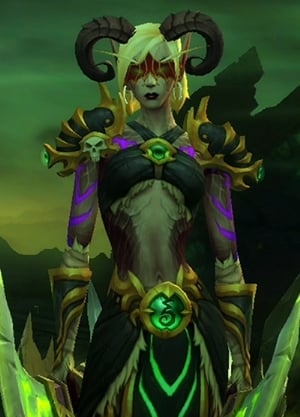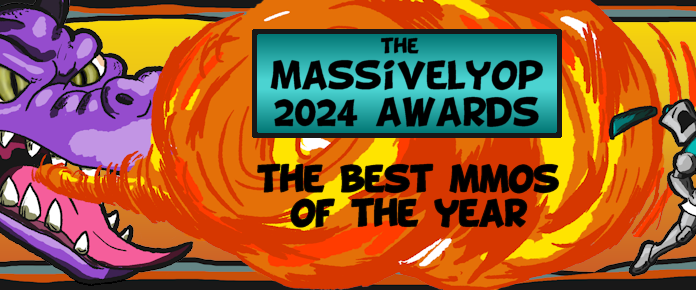
Every so often, when I can think of no better introduction, I put some genuine musing into the opening of What Are You Playing. Usually it’s meant to be absurdist nonsense, but this past weekend is an example of my actually thinking about something, debating how I felt about the whole Allied Races announcement for World of Warcraft. It feels like something I wanted, and yet it feels like it’s not actually how I wanted it, which was an odd sensation.
In some ways, allied races seem like something that we’ve long needed in the game, especially since some of the races in question have just been around for so blessedly long. In other cases, they seem like a patch on another issue… and yet it’s another issue that’s being addressed in the same breath. And at the end of the day, you can explain a lot of it just by thinking about action figures.
An effort in breaking down
 Let’s start by making something clear: Designing a new race in World of Warcraft is a fair amount of work. Even with the game’s admittedly weak character creator, there are so many necessary bits to the creation process. If a regular character model (like, say, the all-purpose crocolisk model) is an action figure, a player race has to be an action figure with multiple interchangeable parts that at no point look like multiple interchangeable parts. You need at least ten different faces (of which players will use two), a dozen hairstyles, multiple skin shades, an extra customization option or two… there are a lot of parts to make work.
Let’s start by making something clear: Designing a new race in World of Warcraft is a fair amount of work. Even with the game’s admittedly weak character creator, there are so many necessary bits to the creation process. If a regular character model (like, say, the all-purpose crocolisk model) is an action figure, a player race has to be an action figure with multiple interchangeable parts that at no point look like multiple interchangeable parts. You need at least ten different faces (of which players will use two), a dozen hairstyles, multiple skin shades, an extra customization option or two… there are a lot of parts to make work.
And then you have to make sure that armor is all rigged properly. And that the race has functional animations and interacts properly with things in the open world. And it has to do this with all of its parts simultaneously. Making player race models is a big, involved process, in short.
The action figure analogy there is intentional, though, because this is a real situation that actual toy companies face regularly. By far, the most expensive and time-consuming portion of making an action figure is getting the initial mold cut; thus, the more uses the company gets out of the mold, the better. And the easy way to do just that is release a redeco (a figure with the plastic colors and paint applications changed) or a remold (the same core mold, but with some number of parts altered in a cosmetic but not functional fashion).
Have you ever wondered why every single G.I. Joe figure from the ’80s toyline had the same basic construction and many of them had similar parts? That’s why.
WoW is no stranger to this, of course, as it’s been using redecos and remolds for ages. New colors on a skin are nothing new or unusual, but we also see several times when the same basic model is used as the basis for something else. A fine example is the “hag” models for Battle for Azeroth that we saw during the game’s art panel; it seems obvious from posture and movement that these are based on the models for the Arakkoa from The Burning Crusade, using the same animations and bone structure with a new collection of visual elements.
This exact same approach has been used for lots of races over the years. The uncorrupted orcs of the Mag’har, for example, are just normal Orc models with a different skin tone. Dark Irons, similarly, are Dwarves with different tones. None of this is surprising or unusual.
Over the years, we’ve generally not gotten options like this in character creation, even when people have clamored for it. When we get a new race, that new race has been a completely new model. The Blood Elf model doesn’t really take anything from the Night Elf model; both of them are completely distinct. Allied races are something different simply because they represent a new race that is not an entirely new construction.

The knock-off factor
Here’s the thing: While this makes perfect sense, it also runs into a different problem where the new races feel like knock-offs. Instead of getting a new option that you’ve never had available before, you get a new option that is still very similar to existing options. It’s why the “sub-race” idea was seen as plausible – these are new races only in the broadest terms.
Each of the allied races that we know of has a more restrictive class layout than similar races. Lightforged Draenei, for example, can’t be Shamans (because they don’t have any Broken to discover shamanism). They also don’t have a distinct starting zone, capital, or anything else. They are a satellite, a subordinate option compared to the main Draenei option.
For the most part, this is a logical decision based on years of operating the game. I don’t actually need a starting area for the Zandalari Trolls because I’ve been learning about Zandalari Trolls since the game launched. While I joked about the idea of having a brand-new kind of Troll introduced and slotting perfectly into the game’s existing cosmology, five of the allied races are ones that we have at least had an entire expansion to learn about, and two of them have been kicking around for ages.
At the same time, there’s the very real sense that these options are somehow lesser. They don’t have a new starting experience, they don’t have as many class options, they feel like a half-step between “new race” and “no new race.” Again, the action figure comparison isn’t unintentional; there are fans who see redecos as “cheap,” and while the rationale behind them is solid, it’s still a case of getting a new toy that isn’t actually a new toy.
Void Elves and Nightborne, at least, have different silhouettes than the other elf options available for the factions. Dark Iron Dwarves in particular are going to be nigh-on identical to garden-variety Dwarves unless you see their faces (or heritage armor).
I think this is why a lot of people were looking to sub-races as well; having the races just be a toggle somehow seems to lessen the sting. If all of the “main” races get a “sub” race with all the same basic options, the real lesson would be “more character creation choices.” When it’s just a small smattering of new races, the “lesser” effect starts to kick in.
Proof and pudding
 Here’s the other side of things, and it’s multifaceted, beginning with the fact that the developers have reiterated, multiple times, that these allied races are a starting point rather than an end point. If that is a promise that gets delivered on, allied races could be a start on giving players a lot more options over time.
Here’s the other side of things, and it’s multifaceted, beginning with the fact that the developers have reiterated, multiple times, that these allied races are a starting point rather than an end point. If that is a promise that gets delivered on, allied races could be a start on giving players a lot more options over time.
This ties into an answer from the question-and-answer panel in which we were told that you could now have orcs standing upright instead of hunched over. We were told, explicitly, that one of the reasons we didn’t get more character options before was that the developers have been retooling the character creator, and we saw some evidence of this with the additional customization option for Demon Hunters.
Adding allied races and then getting more options for even older races feels like something that goes hand-in-hand; if the tech is there for one, it’s there for the other, and both can support one another.
Furthermore, it helps with new players with the heritage armor. Instead of finding an underpopulated low-level range, suddenly players have a reason to go back and level; if you’re playing your allied race, you don’t just want to boost your character. Allied races let you jump in at a reasonable level and avoid some of the earliest doldrums, but you’re still leveling through content and will be queueing for older content.
WoW already has a high number of sapient races. Some of these, for whatever reason, cause major issues in trying to make them playable (Naga, for example), and others have long made sense for races but not for the traditional starting experience (Vrykul). And there are many races that are, functionally, close-but-not-identical to existing races, many of which can be ported in as allied races. There’s space for things like Kul Tiran Humans, for example – a slightly different model with the same basic rigging, different customization options, and a few class options moved around (say, no Death Knights or Monks, but Shamans and Druids are allowed).
Plus, the fact that these are a separate race option frees us from an obvious limitation: Some races have more “sub-race” options than others. There are at least two more sub-races of Draenei that are plausible for inclusion at some point (Broken and Eredar), but in my speculation column I pointed out that it’s hard-to-impossible to make Pandaren sub-races. Allied races could give you options that still tie into the main race (Lightforged Draenei), they could be in direct opposition to the majority of their race (Void Elves), or they could be a factionalized subset of a largely neutral group (Highmountain Tauren). All that matters is that they are a variant, they look different, and there’s a reason for them to be different.
So what we’re getting is not quite what I had expected or wanted. In the long run, though, it could be better. Or it could be significantly worse, depending on how things play out in the future.
If the game starts selling new races separately from the expansion in the store, though, we’re going to have some words.
 War never changes, but World of Warcraft does, with a decade of history and a huge footprint in the MMORPG industry. Join Eliot Lefebvre each week for a new installment of WoW Factor as he examines the enormous MMO, how it interacts with the larger world of online gaming, and what’s new in the worlds of Azeroth and Draenor.
War never changes, but World of Warcraft does, with a decade of history and a huge footprint in the MMORPG industry. Join Eliot Lefebvre each week for a new installment of WoW Factor as he examines the enormous MMO, how it interacts with the larger world of online gaming, and what’s new in the worlds of Azeroth and Draenor.












